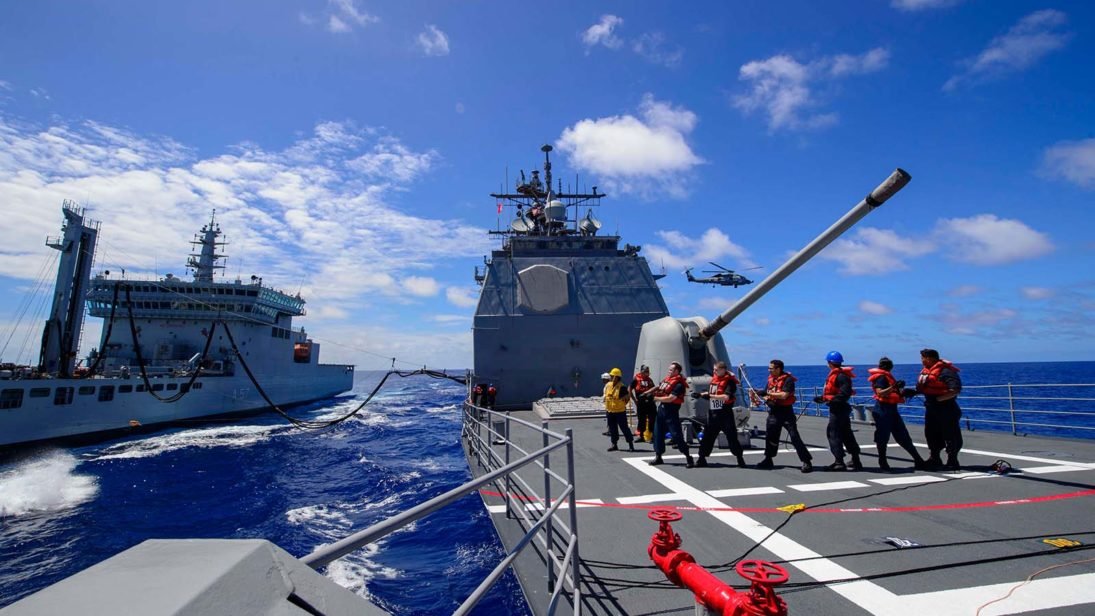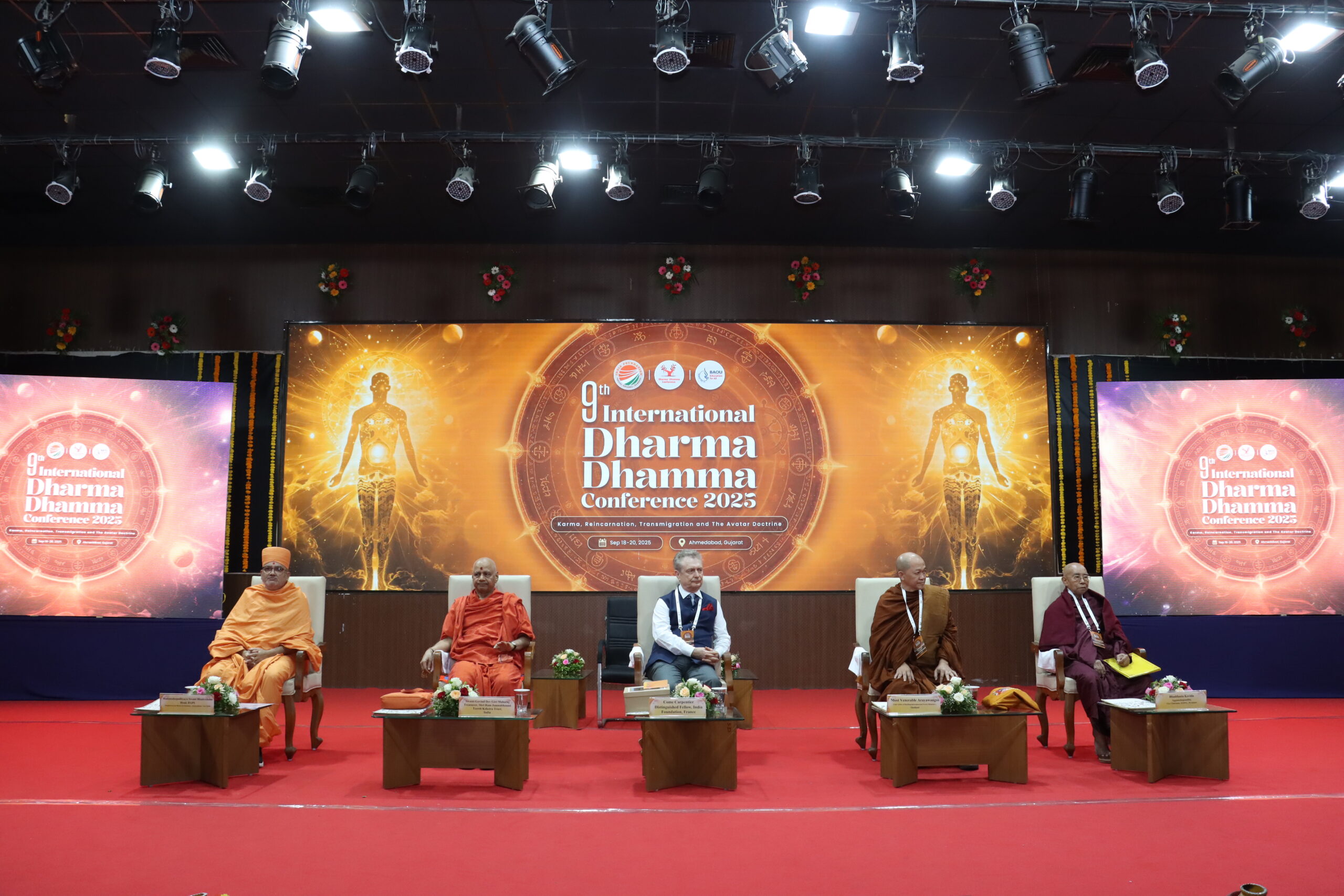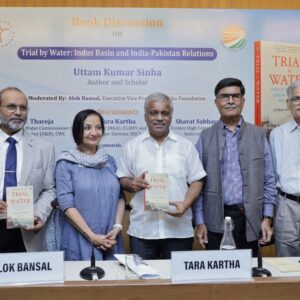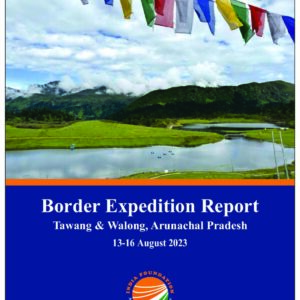On Dec 07, 2021, the late Gen Bipin Rawat, CDS, highlighted the importance of simplifying defence cooperation within a region. He was addressing delegates from BIMSTEC Nations at a Curtain Raiser event held at Delhi, for PANEX-21- an HADR (Humanitarian Aid and Disaster Relief) exercise envisioning greater regional cooperation.[i]
PANEX-21 is the third in the series of BIMSTEC HADR exercises, and is ground-breaking in two ways. Firstly, the theme of the exercise is ‘Response to Natural Disasters in the backdrop of a Pandemic’, exploring the new challenge where existing rescue and relief SOPs must be modified in line with pandemic management protocols. Secondly, the militaries of the member nations are participating for the first time, indicating that the role of the Armed Forces is expanding into Operations Other Than War (OOTW) to include HADR. The motto for the exercise, quite aptly, is “Together, We Win”.
Why Do We Need Regional HADR Cooperation?
In the past, western developed nations were the leading providers of humanitarian assistance, leveraging their economic and military prowess to project “soft power” across the globe. However, the changing world order, the increased interdependence on multilateral issues within a region and the economic rise of nations (especially in South and South East Asia) has seen a reversal of western ‘expeditionary’ HADR operations, with regional groupings providing similar assistance.
For example, to enhance ASEAN’s collective response to disasters, member states developed the ASEAN Agreement on Disaster Management and Emergency Response (AADMER) and established the AHA centre for coordinating disaster management issues. Catalysed by experiences gained and lessons learnt during the 2013 Typhoon Haiyan experience, the “One ASEAN-One Response” Declaration was inked in September 2016 to “increase the speed, the scale and the solidarity of ASEAN’s response”. Mr. Said Faisal, former Executive Director of the AHA Centre, has said “Speed is about how fast we can move. Scale is about how big the resources that we can mobilise. Solidarity is about doing this together. It is about a united response in the region”.[ii]
Many experts believe there is a clear case for regional cooperation for Disaster Management because the primary impacts of large-scale disasters are often felt across national borders. Second and third order impacts on economy, healthcare and rebuilding are definitely of regional concern. Speaking at a seminar during PANEX-21, Mr. Md. Mosharaf Hossain, Director, Connectivity and Security Division, BIMSTEC Secretariat, said that there was a need to explore the feasibility of a “One Region-One Response” policy.[iii]
The diversity of capabilities, expertise and structures in different nations in a region can be leveraged as an opportunity for promoting regional cooperation on disaster response by sharing of information, experiences and best practices. From Disaster Risk Reduction technologies to pooling of resources by trusted partners within a region, a joint approach can make better facilities available as well as speed up response times—all leading to saving valuable lives and limiting disaster damage. Finally, regional cooperation in “Building Back Better” would catalyse a rebound for the regional economy.
Why include the Military?
Militaries have expertise in surveillance & reconnaissance, evacuation, restoration of communications, debris clearance & quick construction, medical and surgical assistance in field conditions, setting up of relief infrastructure, green field supply chain establishment and so on. The UN urges that militaries should be used during humanitarian situations only as a “last resort” for international responses, but their deployment to manage disasters is quite common in the Indo-Pacific region.
The military’s capabilities to mobilise in the disaster aftermath, provide logistics support and human resources, their disciplined approach and set command and control structures, have always been useful in disaster situations. With limited resources during disasters, almost every developing nation leverages its Armed Forces for HADR.
The militaries, in turn, have acquitted themselves exceedingly well in all spheres in HADR operations, and earned the goodwill of the citizens of their own countries. Trans-border deployments have also taken place under bilateral arrangements, including after the 2004 tsunami, the 2005 Pakistan earthquake, cyclones Nargis (2008) and Mora (2017) and the Rohingya refugee crisis (2018).
Among the quickest to respond to the devastating earthquake in Nepal in 2015, India garnered worldwide praise for ‘Operation Maitri’ by deploying specialised medical and relief teams from the Army and Air Force. In 2020, Indian Naval Ship Kesari was dispatched with military medical teams, essential medicines and food items to the Maldives, Mauritius, Madagascar, Comoros and Seychelles following separate requests from these countries during the pandemic. Hence, there is a strong case for inclusion of military components when creating a regional apparatus for HADR cooperation. Apart from the humanitarian angle, there are spin-off advantages for the militaries, as well: –
- Military Diplomacy. This is a good outreach to extend support and increase the area of influence. It is also a form of military cooperation without a “security” It provides opportunities for militaries in the region to train and operate jointly and increase military-to-military contact, without the raised eyebrows associated with a “military exercise” or a military grouping. The significant goodwill generated can smoothen the way for other alliances, activities and even interventions.
- Military Messaging. Mobilisation of military assets for HADR deployments is showcased as soft-power outreach, but essentially, HADR readiness is also a pointer of operational readiness. The speed and scale of deployment sends the right messages.
- Research and Innovation. While actual deployments would be based on the scope and nature of disaster, routine joint training and sharing of best practices in the Preparatory Phase of the Disaster Management Cycle itself is a major platform for showcasing the research, innovations and best practices from the Defence Research as well as private manufacturers. For example, “Raksha Kawach”, a simple but effective innovation by Lt Col Paul of the Armed Forces Medical College, Pune, India[iv] was showcased at PANEX-21. The mechanism is for reducing the contagious aerosols from a COVID patient and minimising the risks to HCW as well as other patients, which would be beneficial to other countries in the region. Similarly, from passive DRDO innovations like a quick deployable isolation hospital to “Dual Use” technologies for surveillance, communications and rescue operations can be showcased, in an increasingly competitive world.
- Maintenance of Peace. The Disaster aftermath is often a breeding ground for law-and-order problems, and the presence of a disciplined and respected force quells despair that forces the community to sink into lawlessness. By a limited stretch of imagination, a quick response to contain the damage in the recipient country also messages inimical forces. Disasters also expose certain socio-economic and security vulnerabilities of the affected area, where adversaries with specific agendas would rush to fill the void and gain traction for specific narratives. Military deployment for HADR ops under the regional umbrella can thwart this threat to a considerable extent for the greater good of both the recipient nation as well as the donor.
When to use the Military
It is important to lay down terms of reference for the employment of militaries for this secondary role, to obviate sensitivities and respect jurisdictions. Military operations for HADR must always be in support of a regional or national HADR agency, as a tool to supplement the existing relief mechanism.
Deployment must always be at the request of the recipient state, under a Regional Framework Agreement. The regional grouping HQ or secretariat may take the decision for regional military deployment based on:
- The scale of the disaster
- Nature of response/aid needed
- Proximity and capability of other responders
- Need for specialised military equipment.
The final utilisation and deployment must be under the aegis of the recipient state, with a regional control cell coordinating the regional and global relief efforts. Necessary clearances and readiness of humanitarian support and relief material, teams and equipment must be worked out in the preparatory phase itself. This calls for institutionalisation of diplomatic and legal protocols for regional humanitarian response.
One Framework for ‘One Region- One Response’
The offer of military assets to another country for HADR operations is usually coordinated through bilateral offers of disaster assistance. The pooling in of military resources at the regional level is certain to result in economy of effort and optimising the efficiency of response.
ASEAN has already done so with its Concept Paper on the ASEAN Militaries Ready Group (AMRG), a coordinated military capacity that would deploy under the ‘One ASEAN, One Response’ framework. The ‘Expert Working Group’ of ASEAN Defence Ministers developed standard operating procedures to streamline the management of multilateral military teams for rapid and coordinated deployment to disaster areas. The concept for AMRG was thus born.[v]
A similar arrangement exists in the Caribbean, where ‘CARICOM Disaster Relief Unit’ is a regional response mechanism that mobilises and deploys to CARICOM States after disaster strikes, but the AMRG model is more evolved, resulting in a truly multilateral approach to HADR and showcasing ASEAN as the pioneer in multilateral military cooperation for OOTW.
The complexity of regional military support for HADR involves synchronisation of regional efforts for risk assessment, institutionalisation of contributing assets, jurisdictional issues, security and legal sanction for other militaries, coordination of move and deployment and harmonisation of response plans. Thus, there is a need to set up a regional organisational structure and framework treaties.
Regional Organisational Structure
For HADR to move away from bilateral or multilateral trappings to a truly regional paradigm, an organisational structure with embedded channels of control & communications is a prerequisite. The common ground of agreement in a humanitarian crisis scenario needs to be deliberated, found, accepted and evolved into a regional institutional & legal framework to ease coordination of relief efforts in a dynamic, chaotic post disaster environment.
Since different nations have different capacities and capabilities, a mapping of these military assets volunteered by member countries will need to be done, recommended under the following heads:
- Mobility Assets: Ships, transport aircraft, vehicles, engineering and plant equipment.
- Communication Assets : Quick deployable towers, satellite communication sets, radio sets.
- Surveillance and Reconnaissance Assets : Drones, Quadcopters, Unmanned Ground Vehicles, radars, surveillance aircraft.
- Search, Rescue and Evacuation Assets: Special Forces, Heartbeat sensors, rafts, Helicopters.
- Medical Assets: Quick deployment teams and medical/surgical equipment or medicines, field hospitals or surgical centres, diagnostic laboratories etc.
- Survival Assets: Relief aid packages including foodstuff, blankets, tentage, storage shelters, mobile sanitation arrangements, electricity generators etc.
- Human Resource Assets: Experts in technology, communications, debris clearance, logisticians, doctors.
- Capacity Building Assets: Training facilities, conduct of exercises, SOPs etc.
To harmonise efforts of multiple stakeholders from transnational to local levels for containment, mitigation and response in the event of a disaster, the regional grouping must evolve and formalise institutional and legal frameworks for information dissemination, mobilisation of resources, interoperability, channels of communication & cooperation to include military assets.
On occurrence of a disaster that needs a regional response, the affected member state may requisition the regional coordinator. This may be for specific assistance or a general call for help. In the latter case, an ‘Empowered Group of Experts’ may lay out the specifics. Based on the prioritisation and time of requirement of specific assets, their movement from donor members will be coordinated under the ratified framework.
Hence it is imperative that the militaries of all nations be co-opted in the formulation of the institutional arrangements. They must also participate in various HADR exercises at national and regional levels to enhance training and interoperability.
A Note of Caution
Governmental and military organisations historically prefer structures that are strictly hierarchical, promoting clear channels of information flow (Need to Know) and accountability through Chain of Command (executive orders). However, Disaster Response is an arena where information is scanty and fragmented, communications are jeopardised, and decisions made will affect lives. Effective incident response is relative to four key capabilities[vi]:
- Rapid adaptation in response to changing conditions.
- Management of distributed information.
- Effective coordination between responders.
- Emergent collective action.
Philippines experience in response to the Typhoon Washi (2010) by the existing hierarchical response structure failed to build relationships between responding agencies at the ground level which were severely restricted due to bureaucratic protocols[vii].
An organisation with great degree of formalisation requires more time and effort just to comply with bureaucratic protocols. For disaster response, rigid and hierarchical structures must be changed in favour of flexible organisational structures based on shared leadership, making it possible to adapt faster to dynamic situations.[viii]
Hence, it is imperative that the regional apparatus must facilitate rapid bonding of contingents, ensure reliable common operating picture/situational awareness, quick decision making in a chaotic disaster environment, without infringing perceived national jurisdictions and trespassing on the local sensitivities.
Interoperability would be key, which needs evolution of a common vocabulary for overcoming language barriers, compatible communication systems and simple protocols, participative training and military to military coordination by joint HADR exercises as well as open channels of communication. All the above requirements point towards a flat and modular structure and not a tall and hierarchical one.
Why should we start with BIMSTEC?
BIMSTEC is substantial. BIMSTEC accounts for 22% of the global population – over 1.5 billion people – and has a combined economy of USD 2.7 trillion (GDP).[ix] It is often repeated that the grouping has potential to interface between South Asia and South East Asia (read ASEAN) or even bridge South East Asia with the Gulf Countries.
BIMSTEC is relevant. With the effectiveness of SAARC being watered down,[x] all eyes are now on BIMSTEC towards fructification of the Neighbourhood First and Act East policies. This was also signalled by PM Modi’s invitations to BIMSTEC leaders for the swearing in ceremony for his second term, in place of SAARC leaders whom he had invited the first time.
BIMSTEC is Disaster Prone. The “World’s Hazard Belt”, the Indian Ocean Region, is naturally prone to disasters due to a combination of hydrological and geological factors. Within Asia, 30% of all natural disasters in Asia affect the BIMSTEC grouping. Disasters in the past five years affected 1.28 billion people and resulted in damages of over USD 154 billion[xi] and this is not counting the COVID pandemic.
Leadership is Aligned. BIMSTEC leaders have already encouraged closer cooperation in disaster management through info-sharing, adoption of preventive measures, joint action on relief and rehabilitation and capacity building.
Initiatives have already been taken. BIMSTEC has already taken baby steps in HADR collaboration by way of three joint exercises, the latest one being PANEX-21 at Pune. The BIMSTEC Centre for Weather and Climate (BCWC) is established and provides information and capacity building assistance to member nations. India is also providing Disaster Early Warnings and has set up a link between BIMSTEC countries through the Tsunami Early Warning Centre.[xii]
This is an opportune time. The Draft Charter of BIMSTEC secretariat is likely to be ratified in the 5th Summit likely to be held soon. 14 erstwhile shared areas of interest are being whittled down to 7 sectors, with a Member State as lead country in coordinating activities in each sector.
Disaster Management will be clubbed under the Security Sector with India as the Lead Country. This is a golden opportunity to press for greater regional cooperation, because “Together, we win!” the cooperation model, once validated, can be suitably modified for other regional groupings.
CDS Gen Bipin Rawat’s last public appearance was when he addressed delegates for the PANEX-21 Curtain Raiser. He spoke about highlighted the importance of drawing ‘Common Legal Frameworks and Information Sharing Mechanism’ to simplify Defence Cooperation among BIMSTEC Nations.[xiii] The time has come for this vision to be realised.
Author Brief Bio: Colonel Rajat Mohan Bhatt is a serving Army officer. He is an alumnus of Sherwood College, the Defence Services Staff College, Army War College and the College of Defence Management. He possesses a PG diploma in Disaster Management.
[i] PIB Press release at https://pib.gov.in/PressReleaseIframePage.aspx?PRID=1778741.
[ii] One ASEAN, One Response declaration from https://asean.org/storage/2016/09/Declaration-on-One-ASEAN-One-Response.pdf
[iii] Recorded by the author during PANEX-21 Seminar, Session II, Pune , 20 Dec 2021.
[iv] https://timesofindia.indiatimes.com/city/pune/afmcs-new-device-raksha-kawach-contains-filters-infectious-aerosols/articleshow/79049619.cms
[v] Trung, Nguyen T., “Ability of the ASEAN Military Ready Group to Provide Effective Humanitarian Assistance and Disaster Relief Operations”, Defense Technical Information Centre (US DoD) report from https://apps.dtic.mil/sti/citations/AD1125002
[vi] Nowell, B., Steelman, T., Velez, A.-L. K., & Yang, Z. (2017). The Structure of Effective Governance of Disaster Response Networks: Insights From the Field. American Review of Public Administration Vol. 48(7), 699-715.
[vii] Jovita, H. D., Nurmandi, A., Mutiarin, D., & Purnomo, E. P. (2018). Why does network governance fail in managing post-disaster conditions in the Philippines?. Jàmbá Journal of Disaster Risk Studies, 10(1).
[viii] Gaspary, E., Moura, G., & Wegner, D. (2020). How does the organisational structure influence a work environment for innovation? Int. J. Entrepreneurship and Innovation Management, 24(2,3), 132-153.
[ix] MEA. (2020). Brief on BIMSTEC. Delhi.
[x] Jawad Falak, Implacable Failures of the SAARC, 21 Jun 2017, from https://cscr.pk/explore/themes/politics-governance/implacable-failures-of-the-saarc/
[xi] Data from the Centre for Research on the Epidemiology of Disasters (CRED, Belgium)
[xii] https://mea.gov.in/Portal/ForeignRelation/BIMSTEC_June_2020.pdf
[xiii] https://news.abplive.com/photo-gallery/news/india-cds-gen-bipin-rawat-s-last-public-appearance-as-he-addressed-panex-21-1498619




